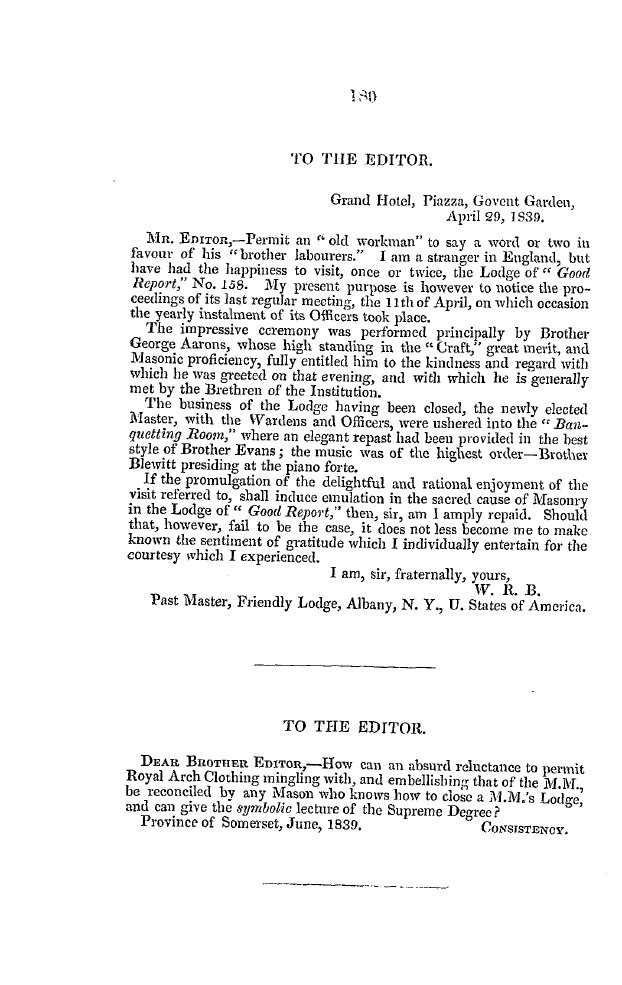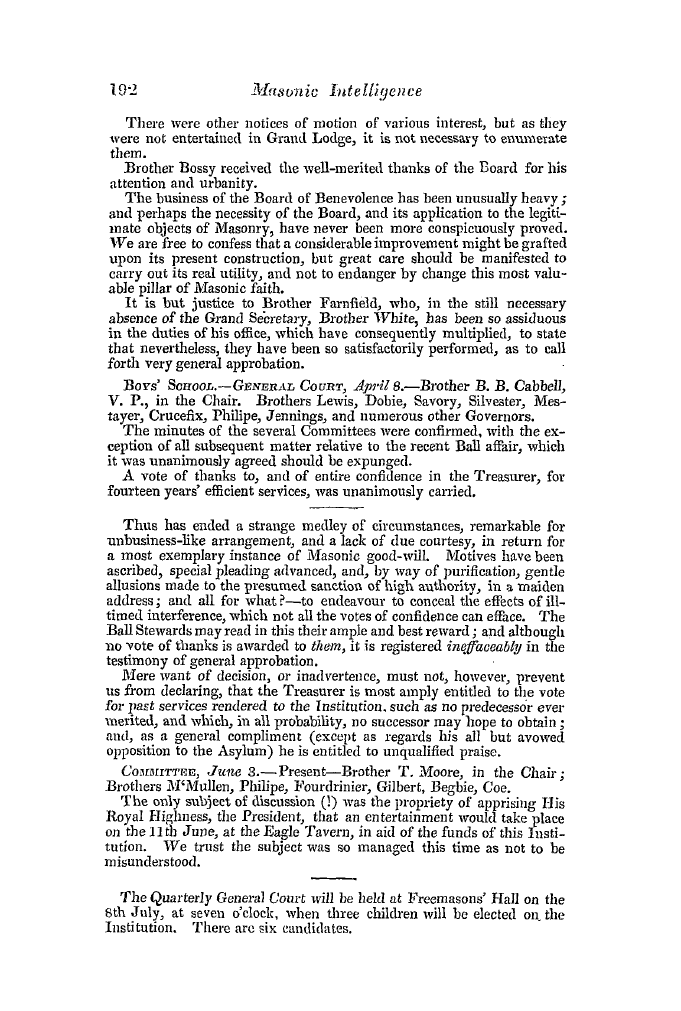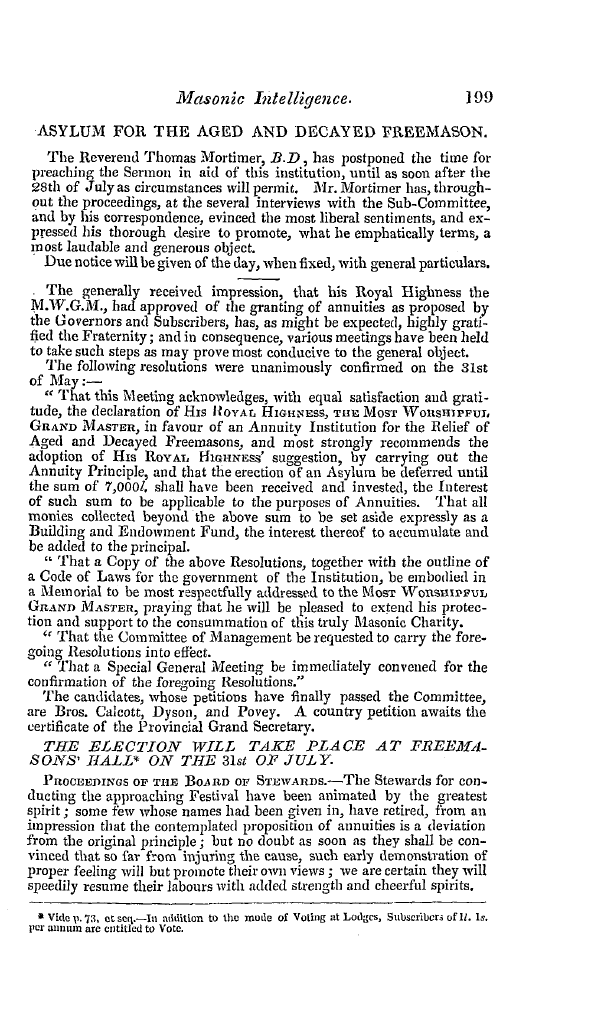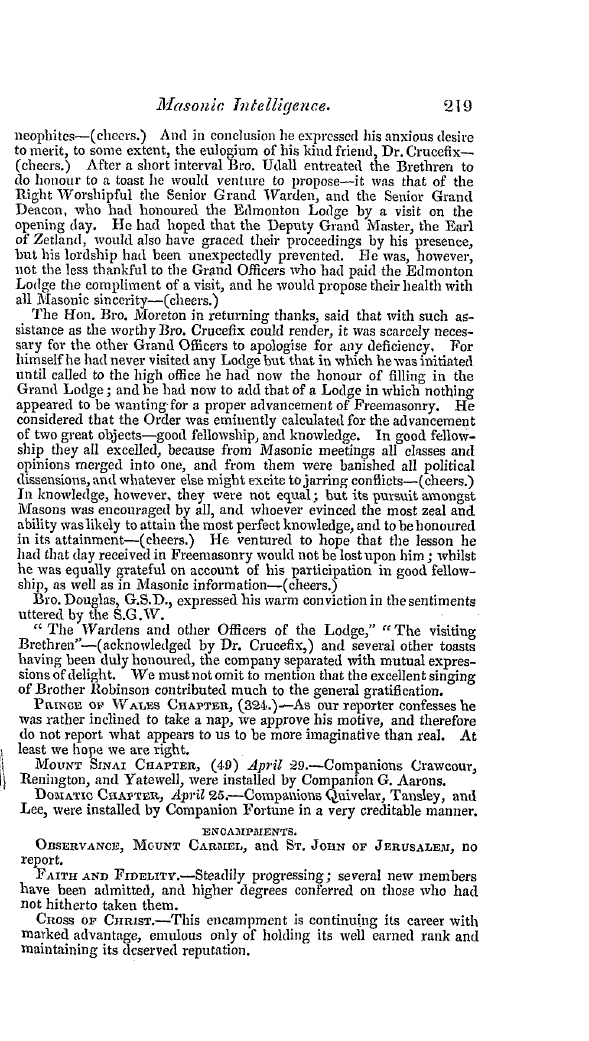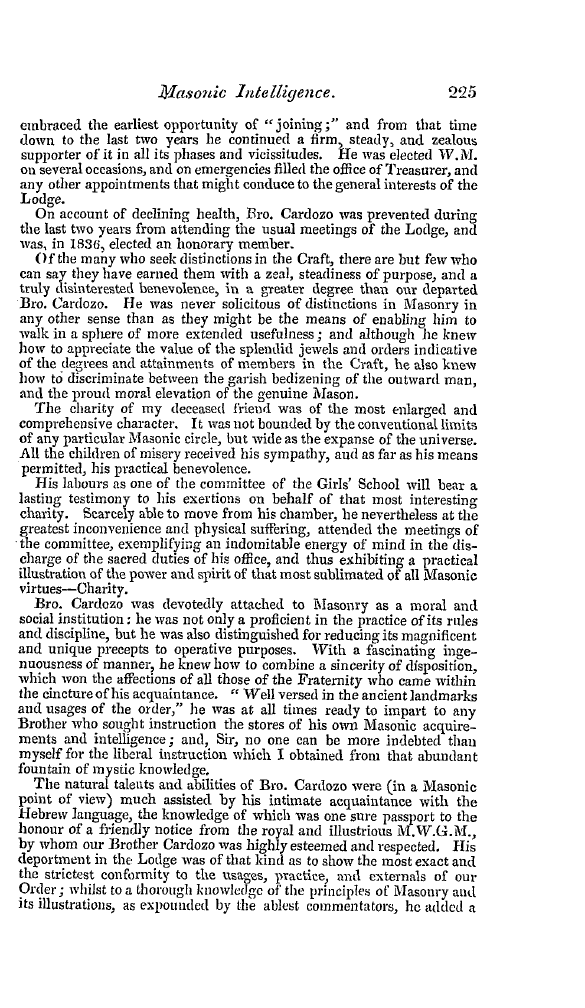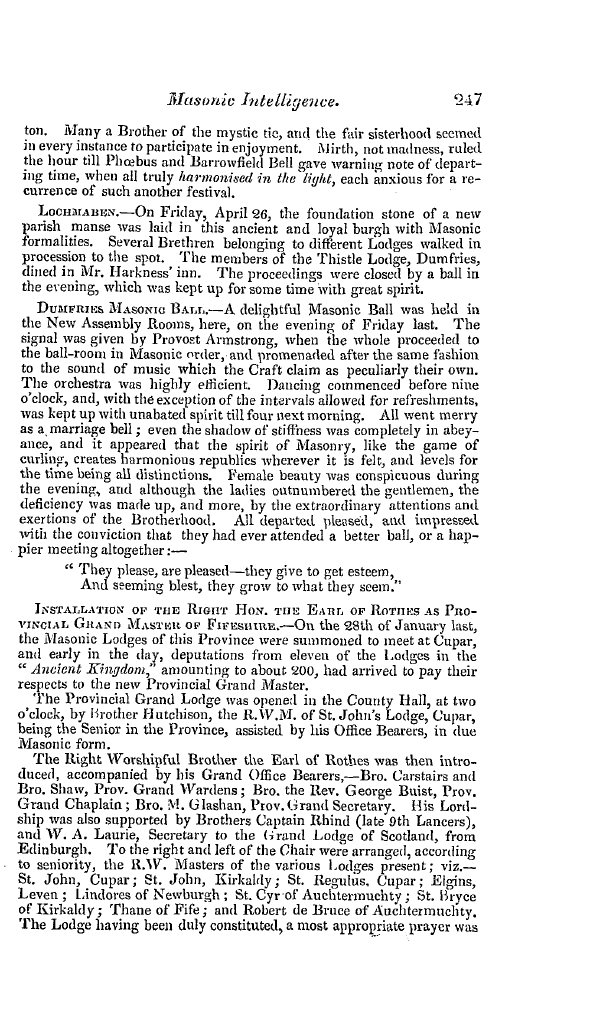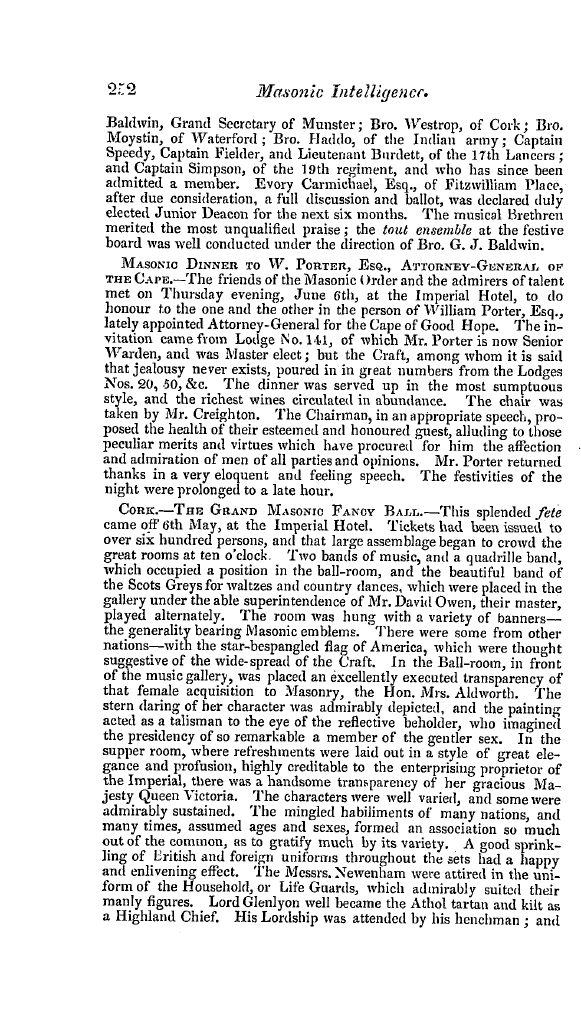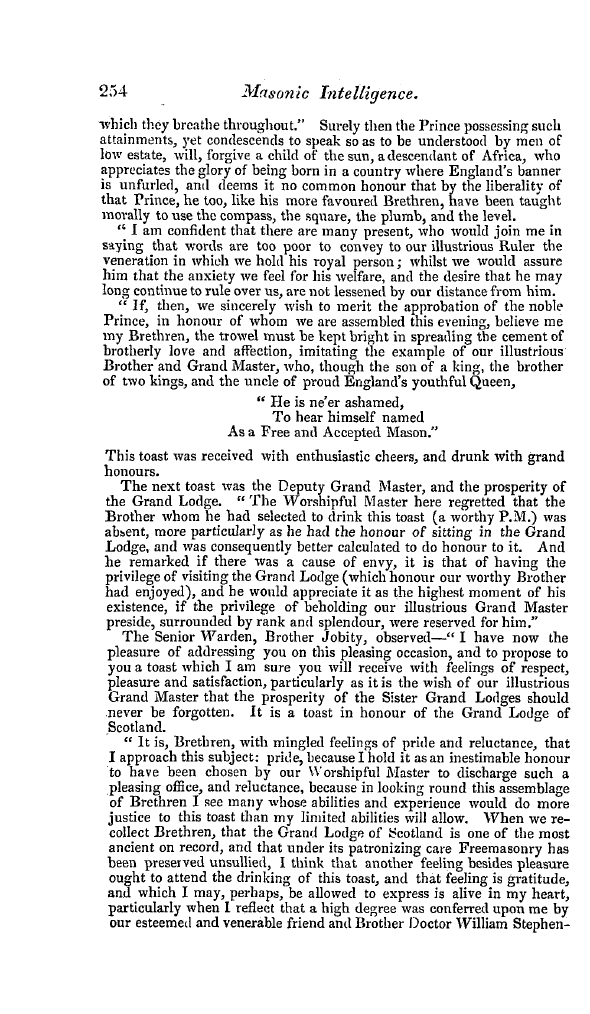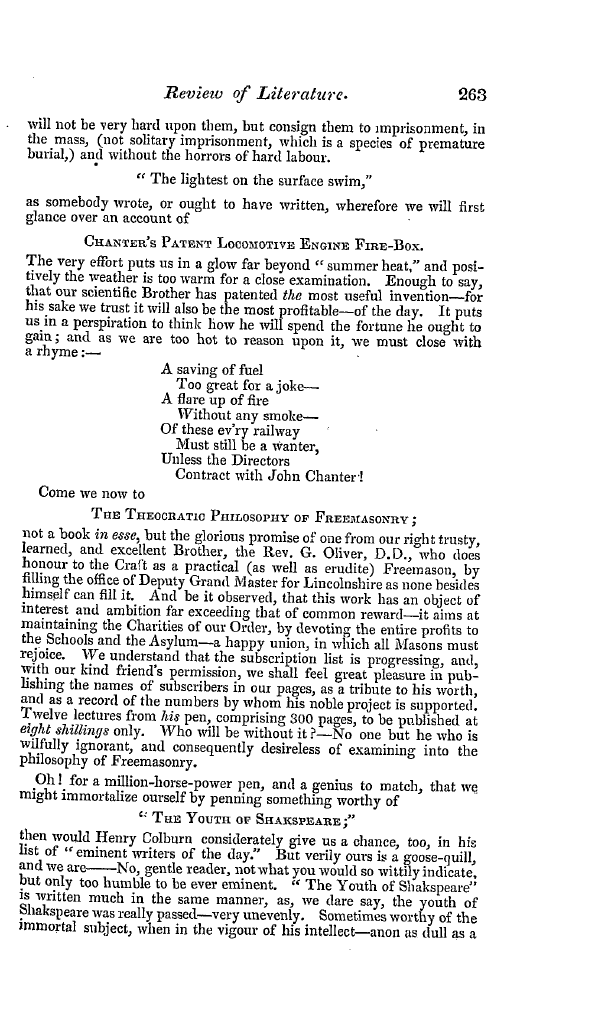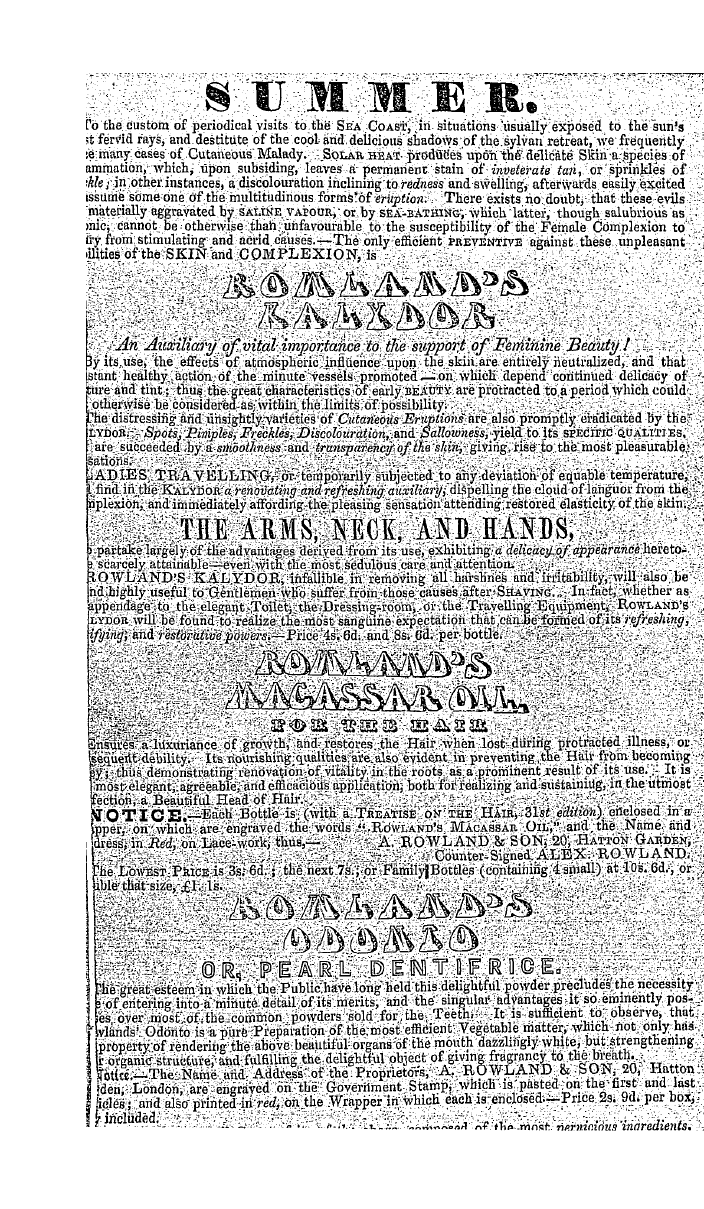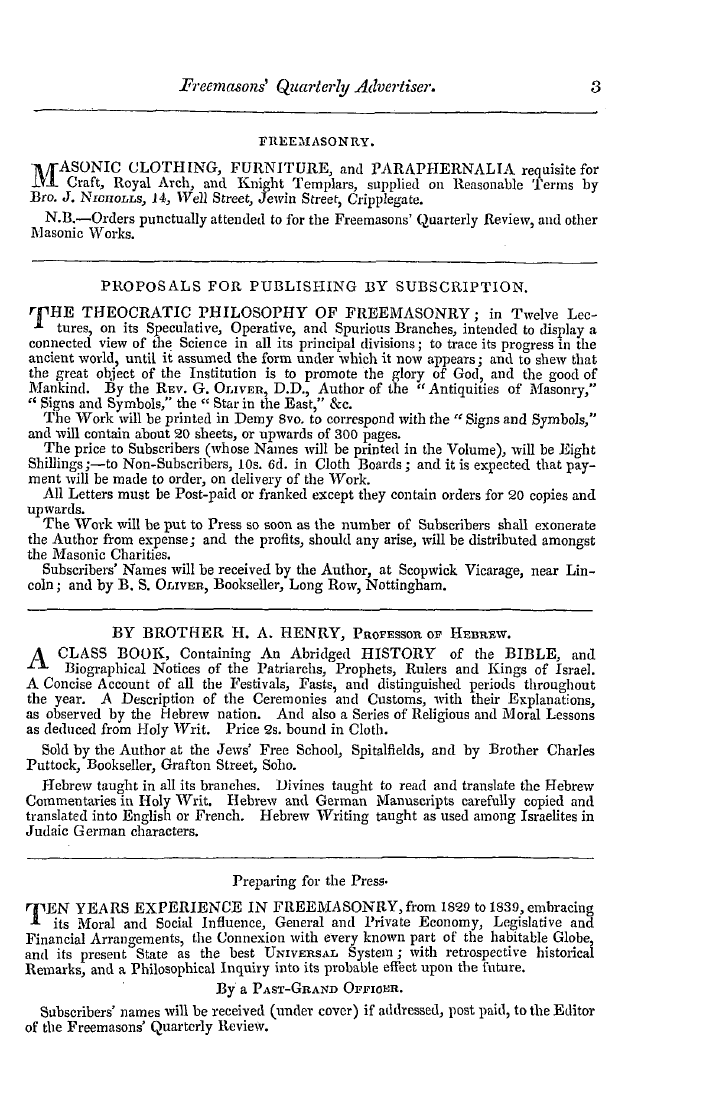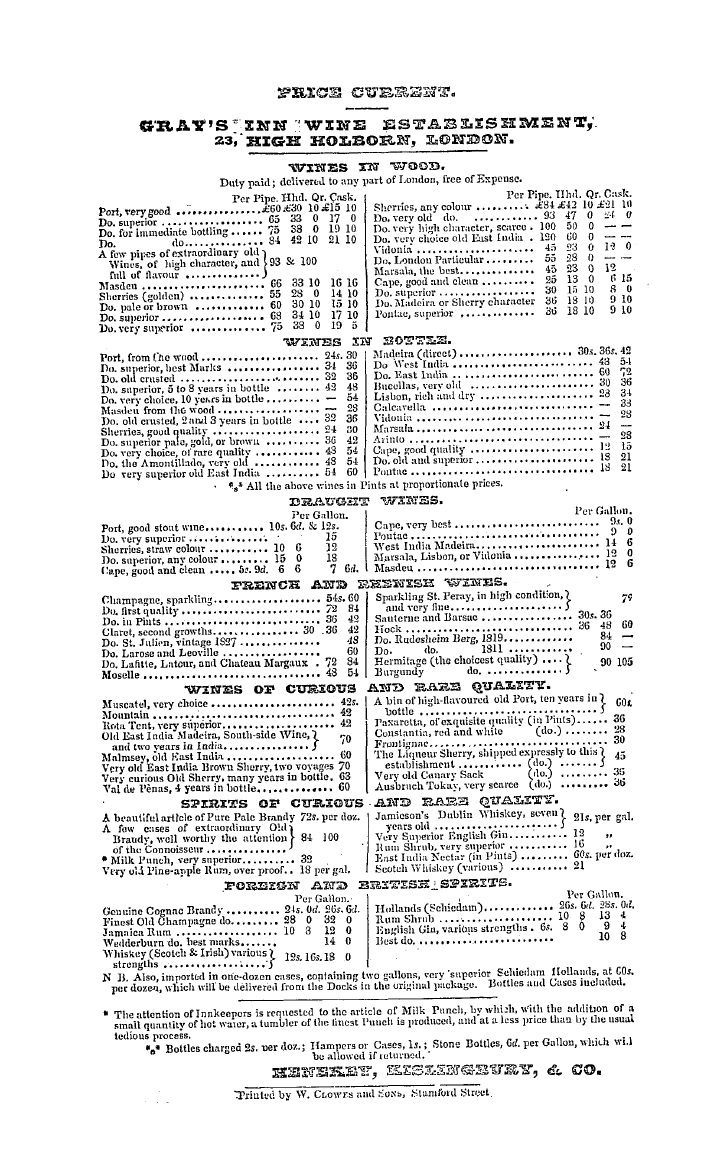-
Articles/Ads
Article HASSAN AND ZOOLMA; ← Page 2 of 18 →
Note: This text has been automatically extracted via Optical Character Recognition (OCR) software.
Hassan And Zoolma;
in retaining an indistinct knowled ge of the Triune Godhead . To the dynasty over which the Brahmans presided as sovereigns in the name of priests , yet with absolute dominion , succeeded the iron despotism of the Mussulman conqueror , who carried all before him even to the confines of Christendom in the name of one God , and Mahomet , his Prophet , as English and French translators will have him to be , though he prophesied nothing , and never professed so to do . That the Mussulmans earl
we je y practisers of Freemasonry , there is much in their history which leads the reader to suppose , and there are many other concomitant circumstances which favour the supposition . In earlier days , when the light of knowled ge was not so generally diffused as now , and when indeed it was confined to a few persons chiefly congregated together in bodies for the purpose of preserving that knowledge , Freemasonry and science went hand in hand . What indeed worthof
was more y conjunction , or more necessary for human happiness , than the knowledge of God , the culture of his laws , and the fostering of all that added lustre , and splendor , and comfort to mankind ? It is not wonderful that such a knowledge of the attributes of God , and a constant adoration of his omnipotence , should have led the Freemasons to pay peculiar attention to the edification of structures to His glory , wherein men might adore his wonderful worksand of buildingswhich should serve to
, , elevate the minds of the worshi ppers towards the object of their adoration . The learned Schlegel ( Frederic ) in his lectures on literature , expressly attributes the building of all the cathedrals of Europe to the body of Freemasons , and therein he is right . He has arrived at this satisfactory result from external evidence , of which fact likewise , those who have access to Masonic records , can bear witness . On turning to Asia , we have every reason to think that similar causes similar effects
produced . Though the peculiarities of both faith and climate have superinduced the adoption of a different style of architecture yet there are still in India the remains of most splendid and massy buildings to testify the skill of the Indian Masons , and their devotion to the studies of their Order . Differing as the Mussulman architecture does from that of Europe , and perhaps on the whole less expressive of grandeur , there does not seem to be one iota less of skill in adaptation to the for which the
purpose buildings are intended . It may , indeed , be a question if , in the above sentence , more than is strictly just has not been conceded to our Brethren in the west ; for if the pictures of the Moorish or Mussulman architecture of the Alhambra be correct , that structure can scarcel y be said to yield to any of Christian origin . Be this as it may , the existence of Freemasonry in India among the Mussulmans , as far back as the eleventh and twelfth centuries , is attested by the Masonic marks and symbols that are to be seen in their edifices un
to this day . Among these , especially in the neighbourhood of Delhi the interlaced triangles , surmounted with the rose , so often to be found in English edifices , may be seen on the roofs of many of the buildings evidencing that our Eastern brethren knew well enough the key-stone of the Royal Order . At the same time it must be allowed , that these signs and tokens are not to be found in the extensive buildings of a more modern datewhich fact would perhaps be taken to evidence the decline
, and fall of Masonry . Such , however , is not altogether the case , as may be seen by looking at the parallel instance of Masonry in England . In this country , we have seen that the craft of practical and operative , has m many cases become separate and distinct from that of speculative
Note: This text has been automatically extracted via Optical Character Recognition (OCR) software.
Hassan And Zoolma;
in retaining an indistinct knowled ge of the Triune Godhead . To the dynasty over which the Brahmans presided as sovereigns in the name of priests , yet with absolute dominion , succeeded the iron despotism of the Mussulman conqueror , who carried all before him even to the confines of Christendom in the name of one God , and Mahomet , his Prophet , as English and French translators will have him to be , though he prophesied nothing , and never professed so to do . That the Mussulmans earl
we je y practisers of Freemasonry , there is much in their history which leads the reader to suppose , and there are many other concomitant circumstances which favour the supposition . In earlier days , when the light of knowled ge was not so generally diffused as now , and when indeed it was confined to a few persons chiefly congregated together in bodies for the purpose of preserving that knowledge , Freemasonry and science went hand in hand . What indeed worthof
was more y conjunction , or more necessary for human happiness , than the knowledge of God , the culture of his laws , and the fostering of all that added lustre , and splendor , and comfort to mankind ? It is not wonderful that such a knowledge of the attributes of God , and a constant adoration of his omnipotence , should have led the Freemasons to pay peculiar attention to the edification of structures to His glory , wherein men might adore his wonderful worksand of buildingswhich should serve to
, , elevate the minds of the worshi ppers towards the object of their adoration . The learned Schlegel ( Frederic ) in his lectures on literature , expressly attributes the building of all the cathedrals of Europe to the body of Freemasons , and therein he is right . He has arrived at this satisfactory result from external evidence , of which fact likewise , those who have access to Masonic records , can bear witness . On turning to Asia , we have every reason to think that similar causes similar effects
produced . Though the peculiarities of both faith and climate have superinduced the adoption of a different style of architecture yet there are still in India the remains of most splendid and massy buildings to testify the skill of the Indian Masons , and their devotion to the studies of their Order . Differing as the Mussulman architecture does from that of Europe , and perhaps on the whole less expressive of grandeur , there does not seem to be one iota less of skill in adaptation to the for which the
purpose buildings are intended . It may , indeed , be a question if , in the above sentence , more than is strictly just has not been conceded to our Brethren in the west ; for if the pictures of the Moorish or Mussulman architecture of the Alhambra be correct , that structure can scarcel y be said to yield to any of Christian origin . Be this as it may , the existence of Freemasonry in India among the Mussulmans , as far back as the eleventh and twelfth centuries , is attested by the Masonic marks and symbols that are to be seen in their edifices un
to this day . Among these , especially in the neighbourhood of Delhi the interlaced triangles , surmounted with the rose , so often to be found in English edifices , may be seen on the roofs of many of the buildings evidencing that our Eastern brethren knew well enough the key-stone of the Royal Order . At the same time it must be allowed , that these signs and tokens are not to be found in the extensive buildings of a more modern datewhich fact would perhaps be taken to evidence the decline
, and fall of Masonry . Such , however , is not altogether the case , as may be seen by looking at the parallel instance of Masonry in England . In this country , we have seen that the craft of practical and operative , has m many cases become separate and distinct from that of speculative



































































